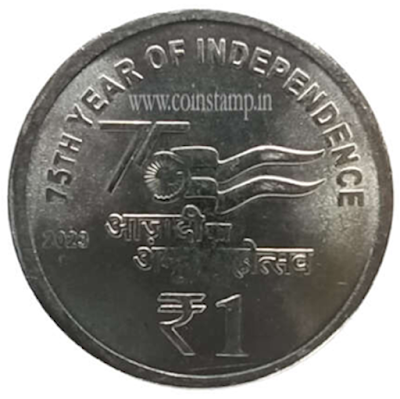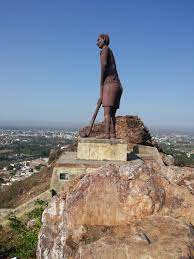Once upon a time there lived a king named Ugrasena. He had a son named Kansa who was the crowned prince of Mathura. He was a cold hearted, merciless, and cruel man. Everyone in Mathura feared his cruel and wicked nature. But one person whom Kansa loved and adored, was his sister Devaki, who was kind, loving and caring. Devaki’s marriage was fixed with a noble man named Vasudev.
The wedding was a real grand ceremonial affair. After all the rituals had finished, Kansa who loved his sister dearly escorted his sister by chariot to her in-laws’ home. On their way, suddenly there was a gust of wind, and the clouds darkened the skies. A loud voice from the heaven above said, “Oh dear Kansa, why are you so happy? Beware the sister you love so much will give birth to son who will destroy you. The eighth son born to Devaki will kill you”.
On hearing this Kansa burst into a rage. He said he would slay his sister before she gives birth to her eighth child. Vasudev begged Kansa, not to kill Devaki. He explained to him that it was not justified for him to kill his own sister on her wedding day and pleaded to spare Devaki’s life. Vasudev promised that he would hand over every child that was born to them. He sincerely requested Kansa to trust him. Kansa agreed to spare Devaki, if Vasudev kept his promise.
He ordered the wedding procession to return to Mathura. When they reached Mathura, Kansa imprisoned Vasudev and Devaki in the palace dungeon.
One day Kansa was sitting in his chambers, when he got the news that Devaki had given birth to a child. Kansa immediately went to the prison. He requested Devaki to hand over the baby but she refused, he snatched the child from Devaki. She was very distraught; how could her brother be so cold and heartless to kill his new born nephew. Kansa took the baby’s life.
After that Kansa killed the next five babies born. Devaki was pregnant for the seventh time. The seventh baby was miraculously carried to Rohini, (second wife of Vasudev), who lived in Gokul. The seventh child was known as Balrama. The guards told Kansa that the seventh child was still born.
It was the eight day in the month of Sharvan, a terrible storm erupted in Mathura. Rain was thundering down; the skies were covered in thick black clouds. Devaki was pregnant with her eighth child. Suddenly Shri Vishnu appeared to Vasudev and Devaki, and told them that their prayers had been fulfilled to save the baby. He told them that He will take birth as their eighth child. He advised him to take the child away to Gokul, and that he must exchange the child for the baby born to Nanda Gopal and Yashoda. Shri Vishnu then disappeared.
At the stroke of midnight, the eight baby, who we know as Shri Krishna was born to Devaki. Vasudev and Devaki’s chains were magically released. Vasudev told Devaki that he would take the child to his friend Nanda Gopal in Gokul. Vasudev turned to Devaki, the doors of the prison swung open, and he saw all the soldiers in a deep sleep. Carefully he held Krishna in a basket on his head.
Vasudev headed towards Gokul. Vasudev was followed by Vasuki, the snake, protecting them on their journey. This was the snake that Shri Vishnu reclined on in the heavens. The snake spread his five headed hood over the basket that Vasudev was carrying, to keep Krishna dry. Vasudev reached the bank of the river Yamuna. To Vasudev’s astonishment the river parted giving him a safe route through. Vasudev reached Gokul.
Nanda’s wife Yashoda had just given birth to a baby girl. Vasudev placed Krishna in the cradle and took the baby girl gently with him back to Mathura. Vasudev returned to the dungeon where the guards were still sleeping, and the prison doors were still open. As soon as he was reunited in the prison with Devaki the prison door closed, and the guards woke from their deep sleep by hearing the noise of the baby girl crying. On hearing the cry of the baby, the guards immediately reported the birth of the child to Kansa.
Kansa went to the dungeon and ordered Devaki to hand over the baby. Vasudev begged Kansa and asked him how could a baby girl do any harm to a mighty warrior like him? Kansa was not ready to hear any of their pleas. The baby girl slipped out of his hand and rose in the air, she transformed into Goddess Yogamaya. She addressed him, “Oh wicked Kansa, you have just shown your evil nature by trying to harm an innocent baby, but your destroyer was born to Devaki at midnight and is now safe in Gokul. When the time comes, he will come and punish you for all the evil you have committed”. Goddess Yogamaya disappeared, as for Kansa he was terrified, and lived a life filled with fear. Vasudev and Dekavi rejoiced.
Hindus celebrate Janmashtami on eighth day of Krishna Paksha of Shravan month worldwide by fasting, singing, praying together, preparing and sharing special food, night vigils and visiting Krishna and Vishnu temples.
Some Hindus simply don't go to sleep during the celebrations and instead sing bhajans, traditional Hindu songs. Food is a key ingredient for Janmashtami: Krishna is thought to have favoured milk and curds, so meals are prepared from these ingredients. However, some Hindus choose to fast all day and night for the first day of Krishna Janmashtami, breaking the fast at midnight.
Song, dance and drama are essential to the lively and colourful celebrations. Plays are carried out re-enacting scenes from Krishna's early life. In temples, images of Krishna are bathed and placed in cradles, whilst the shankh (conch shell) is blown and bells are rung. Holy mantras are also chanted to venerate him.
On this day there is another tradition, there is the human pyramid: a young boy, who stands right at the top of the people shoulders, is elevated by the crowd to reach a clay pot. The pot, known as a handi or matki, is filled with buttermilk. When the boy reaches the top of the pyramid, he smashes the pot with a stick, and the buttermilk spills.




















